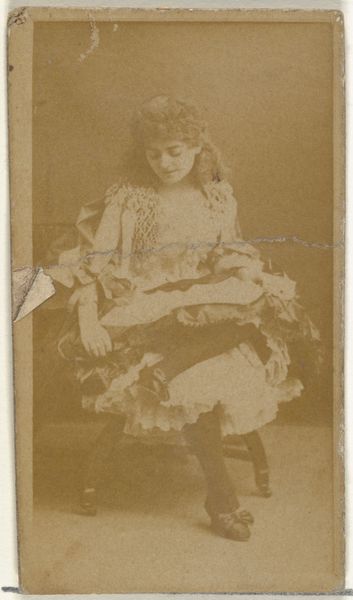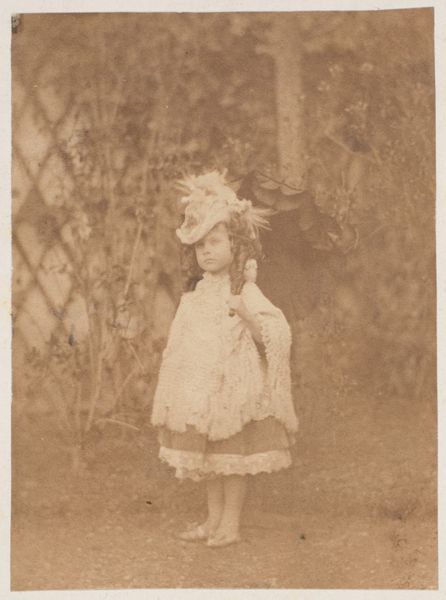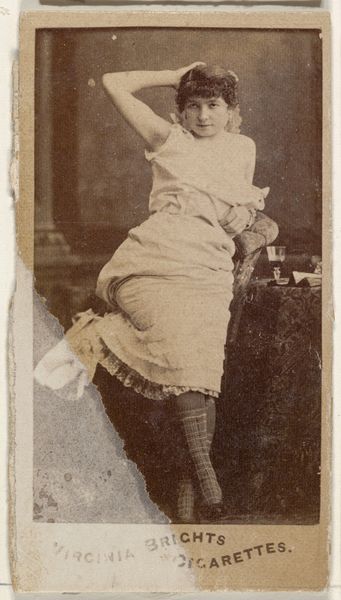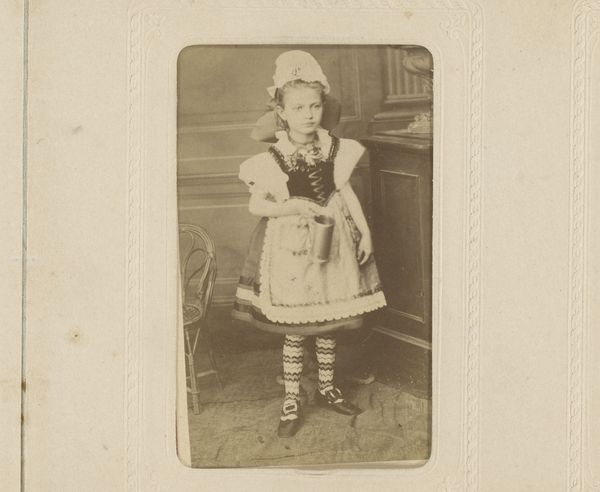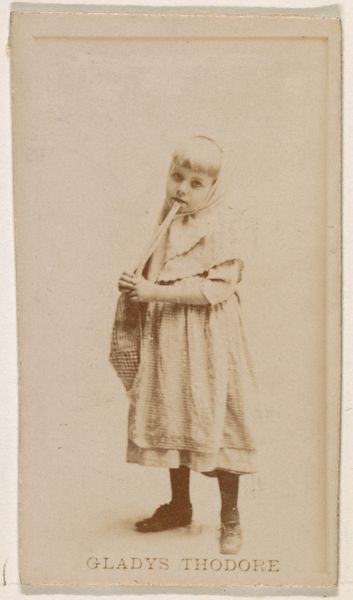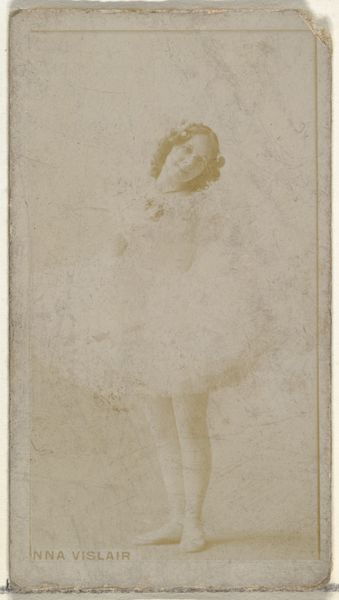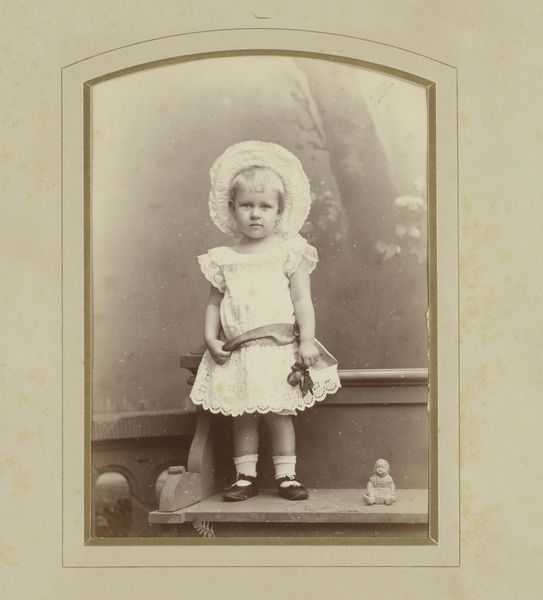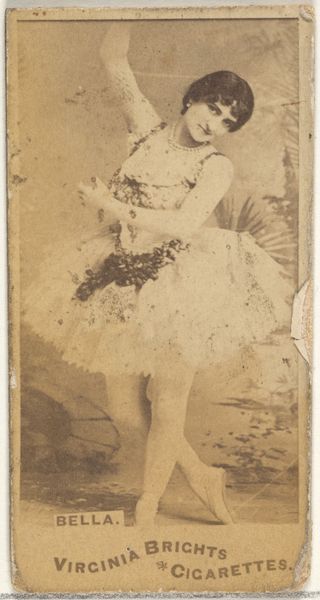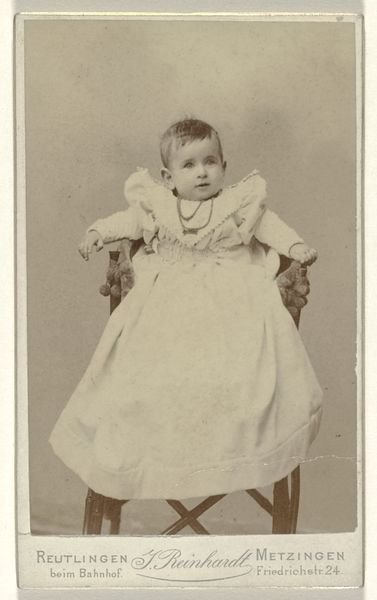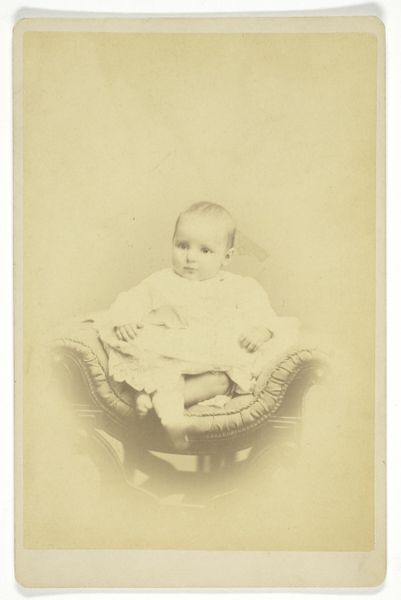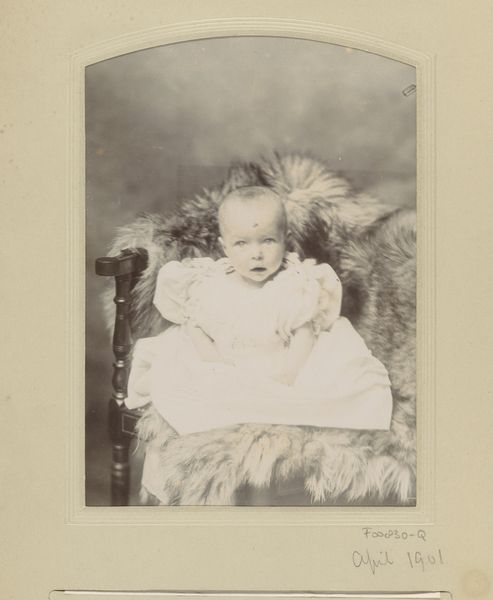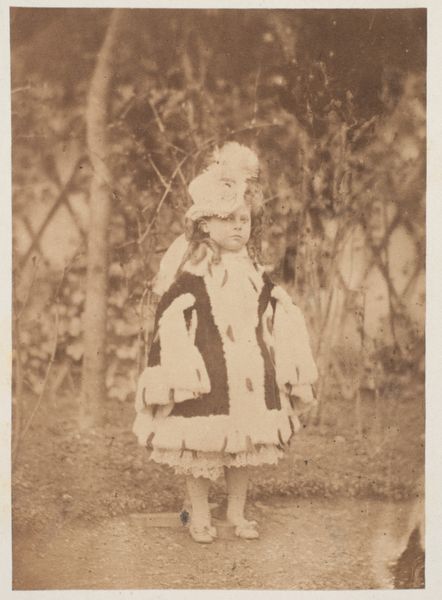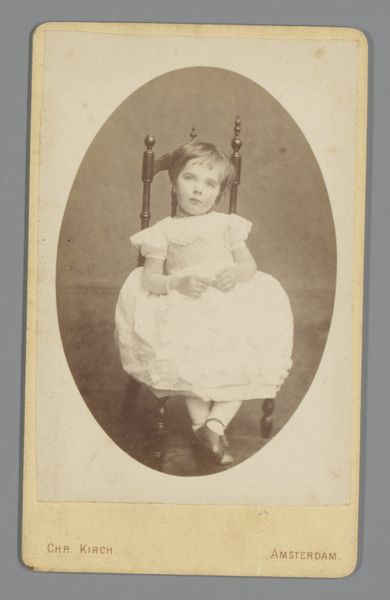
Dimensions: 9.8 x 12.7 cm. (3 7/8 x 5 in.)
Copyright: Public Domain
Editor: Here we have "La Capuche," a daguerreotype by Pierre-Louis Pierson from the 1860s. The young girl’s solemn expression strikes me. How do you interpret this work, especially within the context of the time? Curator: Well, consider that the mid-19th century was a time of rigid societal structures, particularly concerning gender and childhood. This image isn't just a portrait; it's a carefully constructed representation of innocence, fragility, and perhaps even suppression. The elaborate white garments and bonnet, while aesthetically pleasing, could also symbolize confinement and the limited roles prescribed to young girls. What message does that communicate to you? Editor: It's interesting to think about clothing as a signifier of constraint rather than just adornment. Does the photographic medium itself play a role here? Curator: Absolutely. Early photography, like daguerreotypes, demanded long exposure times, requiring the subject to remain still, almost frozen. This stillness echoes the social expectations placed on women – to be seen and not heard, passive rather than active. Think of how Romanticism, in the same period, idealised women as ethereal, almost otherworldly beings, reinforcing these power dynamics. Editor: So the romantic elements contribute to these established structures, then? Curator: It’s more nuanced than that. Romanticism was a broad, sometimes contradictory movement. While it could reinforce certain patriarchal ideals, it also provided a space for questioning those norms. We need to consider class, too. A daguerrotype like this would have been expensive. How do you think the socioeconomic context impacts its meaning? Editor: That’s true. It wouldn’t have been available to many. I see the work now in a much more intricate way! Thanks! Curator: I agree. By recognizing these layers, we can move past seeing a simple portrait and confront the complex dialogues around identity, representation, and social power woven into its creation.
Comments
No comments
Be the first to comment and join the conversation on the ultimate creative platform.
